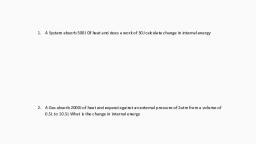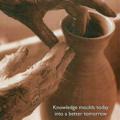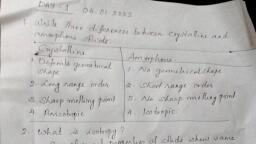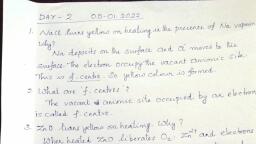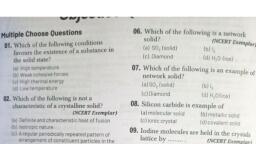Question 1 :
The nature of bonds in compounds of C and Si is:
Question 3 :
Compounds with identical crystal structure and analogous chemical formula are called:
Question 6 :
What is the smallest part of the crystal that has the three-dimensional pattern of the whole lattice called?
Question 13 :
$I$. Metallic solids tend to be very brittle.$II$. Metallic bonds are broken quite easily.
Question 14 :
Which of the following compounds would be a white, crystalline solid?
Question 17 :
If we know the ionic radius ratio in a crystal of ionic solid, what can be known of the following?
Question 19 :
A solid melts slightly above $273$ K and is a poor conductor of heat and electricity. To which of the following categories does it belong?
Question 21 :
At very low temperature, oxygen $(O_{2})$ freezes and forms a crystalline solid. Which term best describes the solid?
Question 25 :
Which of the following is not an example of molecular crystal?<br/>
Question 26 :
Which of the following moleculeshas polar bonds but is a nonpolarmolecule?<br>
Question 28 :
Which of the following statement is not correct about molecular crystals?
Question 32 :
Which of the following exists as covalent crystals in the solid state?
Question 34 :
Assertion: $SiC$ has higher melting point that $NaCl$.
Reason: $SiC$ has stronger electronic forces of attraction.
Question 39 :
Statement: Diamond glitters because of its high refractive index.<br/><br/>State whether the given statement is true or false
Question 41 :
Examples of few solids are given below. Find out the example which is not correctly matched.
Question 44 :
Which of the following is an examples of covalent crystal solid?
Question 45 :
Which of the following exists as covalent crystals in the solid state?<br/>
Question 50 :
Statement: Covalent solids are good conductor of electricity.<br/>State whether the given statement is true or false
Question 51 :
Solid $X$ is a very hard solid which is electrical insulator in solid as well as in molten state and has extremely high melting point. What type of solid is it?
Question 58 :
The thermal conductivity of silver and copper is high because they have following binding :<br/>
Question 59 :
Which of the following is an example of metallic crystal solid?
Question 61 :
Some of the following properties are important in determining whether an element has metallic properties.<br/>I : atomic number<br/>II : atomic weight<br/>III: number of valence electrons<br/>IV: number of vacant atomic orbitals<br/>V: total number of electronic shells in the atom<br/>Select correct properties from the codes given below:
Question 62 :
Which of the solids show the following properties?<br>(i) Electrical conductivity<br>(ii) Malleability<br>(iii) Ductility<br>(iv) Fairly high melting point<br>
Question 63 :
Which type of bonding is responsible for the ability of some solid materials to conduct electricity?
Question 64 :
Statement: The melting point of all substances decreases with pressure increase.<br/><br/>State whether the given statement is true or false.
Question 67 :
The melting point ofRbBris $682^\circ C$, while that of NaFis $988^\circC$. The principal reason that melting point of $NaF$ ismuch higher than that of $RbBr$ is that:
Question 68 :
Which of the following compounds represents an inverse $2 : 3$ spinel structure?
Question 73 :
Assertion: Glass belongs to the category of ionic solid.
Reason: Glass is supercooled liquid.
Question 74 :
Assertion: Crystalline solids can cause X-rays to diffract.
Reason: Interatomic distance in crystalline solids is of the order of $0.1$ nm.
Question 75 :
In a cubic structure of compounds which is made from $X$ and $Y$, where $X$ atoms are at the corners of the cube and $Y$ at the face centres of the cube. The molecular formula of the compound is
Question 79 :
Assertion: Crystalline solids can cause X-rays to diffract.
Reason: Interatomic distance in crystalline solids is of the order of $0.1$ nm.
Question 83 :
<b>Statement-I:  </b>Initially the term pseudo solid was given for solids which were easily distorted by bending and compressing forces. They even tend to flow slowly under its own weight and lose shape.<br/><b>Statement-II:</b>  These characteristics are shown by pseudo solids as in pitch, glass and thus, the name pseudo solid was replaced by supercooled liquids.<br/>

